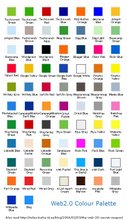
Following recent trips to Tokyo, I have come across this;
A wonderful map of how things are Now: i.e. Web 2.0 and geeky!
The map is rather cleverly based on the Japanese subway system, so it’s a little Japanese orientated, but there are still some really interesting synergies that are going on here in terms of how Web 2.0 platforms are being used and are now opening up and dependent on Web users.
The maps key sites reflect how data is now being aggregated into usable chunks of information and tagged for relevance with the emphasis upon speed, location and dissemination of searches. Represented as main stations, see how popular the likes of Flickr, Facebook, Yahoo! and Google are - need I go on!
Trust me this is really interesting! it shows how the main sites that were being used to ‘index’ the web en masse is now related to how Web 2.0 users are search for and consume information Before order of relevance was a specified, instead now tagging and item shares are orientating web searches and interactions.
Users can now describe and communicate information that is more relevant, up to date and ‘in vogue’ – taking into account changes, latest trends etc as and when they occur. Something that is more in line with how people really think and search.
To return to the Web 2.0 subway weight is given to those sites that are based on communities, interactions and file-shares. Here on Web 2.0 the user is Queen, as the Geek Chic reigns supreme. Information, items, even people become more searchable, taggable and relevant to what you are interested in. Kind of makes you feel warm and fuzzy inside doesn’t it.



